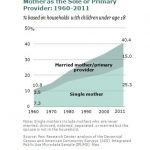Free Sample Article Critical Summary
Article Critical Summary Sample
Purpose of Southwick, S. M., & Charney, D. S. (2013) to write this article was to explain resilience, factors that enhance resilience and those that reduce resilience. The main objects of the article include resilience, stress, anxiety etc. In addition, the objects discussed also include the factors enhancing or reducing resilience. The article is stimulated by the problem that majority of stress victims feel helpless and develop negative emotions and they drown deeper and deeper into the feelings of distressfulness. The article gives very easy and clear explanations of how to convert negative emotions about oneself into positive emotions and thus enhance their resilience.
The article is very significant to understand stress and resilience and the ways in which one can convert his/her negative emotions and distressfulness into positive emotions to boost resilience. The significance of discussion on building resilience is explained well by Dean M. Bekher in Harvard Business Review as “More than education, more than experience, more than training, a person’s level of resilience will determine who succeeds and who fails. That’s true in the cancer ward, it’s true in the Olympics, and it’s true in the boardroom.” The article lends many concepts from well-reputed published materials by credible scholars and sources like Harvard Business Review.
The authors define resilience as the process to adapt well in the face of hardships, traumatic situations, tragedies, threats, or any other significant sources of stress. Biological meaning of resilience is presented as the ability to modulate and constructively harness the stress response, which enhances physical and mental health. The author adds that chronic stress damages the immune system thus introducing various health problems and unhealthy behaviors. The authors limit the concept of resilience to discuss the ways of how to build and enhance resilience. The authors refer to the book “The Science of Mastering Life’s Greatest Challenges” for finding various avenues of resilience building. The book discusses strategies to build resilience, regulate emotions, adopt positive and realistic outlook, accepting challenges, imitating role models and developing supportive social networks. Emotional rescue, cognitive reappraisal, challenging negative assessments, and engaging in mindfulness mediation are unique key terms, adding further meaning to the concept of resilience.





